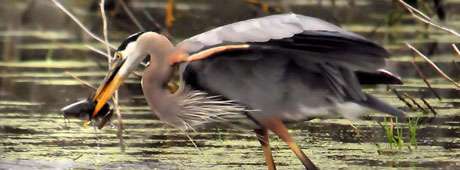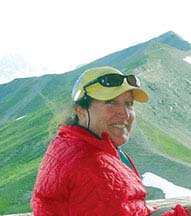No products in the cart.
From Wasteland to Wetland

Adventures in Restoration
By Mary Terra-Berns
You have got to be kidding me,” I said to myself as I scanned the absolute mess just off Highway 2, about a mile east of Priest River. In the summer of 2004 this abandoned property was truly a wasteland. I was on a team of state and federal professionals surveying a two-hundred-and-ninety-one-acre former Louisiana Pacific Corporation (LP) dimensional lumber mill and finger-jointing operation. Dimensional lumber, two-by-fours, for example, and finger-jointing products, which are produced by gluing together unusable pieces of scrap lumber, were manufactured at the site for several years. In the mid-1990s, LP shut down operations because of a limited supply of larger logs, competition from several other mills in the area, and the prohibitive cost of retooling the mill to handle smaller logs. Our team of “ologists” would be overseeing the restoration of this former industrial property to a functioning wetland.
The definition of a wetland varies slightly between agencies but our project was under the auspices of the federal wetland mitigation banking program, which considers a wetland to have wet soil vegetated with hydrophytes (water-loving plants). I wasn’t seeing any water-loving plants.
The property was idle until 2001, when Priest River resident Donna Collier happened on it while looking for land to develop into a residential golf course community. I met Donna during that initial site visit in 2004 and although I toured the property with her several times during the restoration, it had been a few years since we visited when I stopped by in the fall of 2017 to catch up and reminisce.
Donna told me her first thought when she looked at the LP property had been, “Get out of here as fast as possible.” She scrutinized the piles of rotting tree bark, chunks of cement with exposed rebar, twisted metal, assorted bits and pieces of the old mill, and acres of rock-filled former wetlands and shook her head.
As she explored the property, she eventually made her way to a row of mature cedar trees behind the rotting bark piles. She walked through the trees, expecting to see more mill remains on the other side, but was stunned at the scene that opened up in front of her. It was gorgeous! It was like walking through a looking glass—she entered a world of lush green vegetation, a stream, ponds, and wildlife. The beautiful world on the far side of the cedar trees made her reconsider the property and calculate what it would take to clean up the mess on the front side.
This content is available for purchase. Please select from available options.
Purchase Only
Purchase Only

